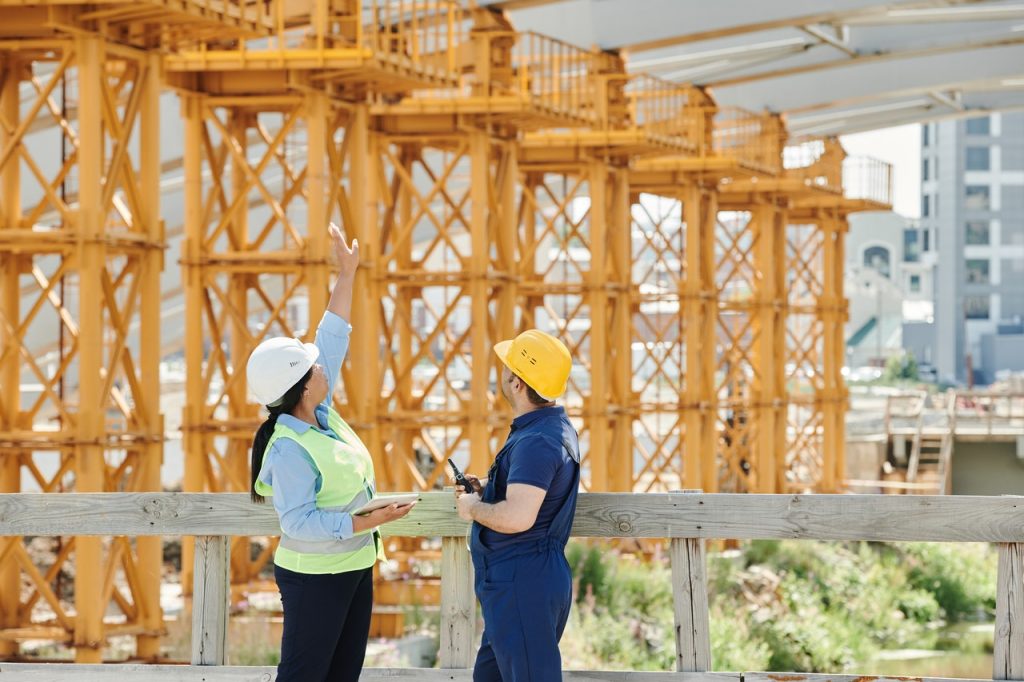5 Safety Considerations for a Commercial Construction Project
There are numerous factors that need to be considered when undertaking a commercial construction project. From regulations to training, ensuring safety on site is crucial to prevent accidents and ensure the well-being of all workers involved. Let’s explore five key safety considerations that businesses must prioritize during commercial construction projects.

Key Safety Regulations for Commercial Construction Sites
Understanding and complying with safety regulations is crucial for any commercial construction project. These regulations are designed to minimize risks and promote safe working conditions. Adhering to key safety regulations can help prevent workplace incidents and injuries.
One important aspect of commercial construction project safety regulations is ensuring all structural frameworks comply with local building codes, as pipelines less than 10 years old cause the most incidents. These codes provide standards for construction practices including material quality and structural integrity. Compliance with these codes is essential for safeguarding workers.
Additionally, workers should be well-informed about laws concerning hazardous materials and proper disposal methods. This knowledge is essential to manage risks associated with other hazardous substances. A comprehensive understanding of these regulations will help maintain safe working environments.
Properly Train Workers for Safety Compliance
Proper training is fundamental to ensuring worker safety on construction sites. A well-structured training program can teach workers how to handle equipment safely, recognize hazards, and follow emergency procedures. Continuous training updates are also necessary to keep workers informed about new safety protocols.
Training sessions should include detailed information. Understanding how to handle this material properly can prevent accidents and exposure-related injuries. Incorporating practical training exercises can also enhance workers’ ability to manage real-life situations effectively.
Businesses must ensure that all new employees undergo a rigorous safety training program before starting work. Refresher courses should be provided regularly to keep safety practices in line with evolving site conditions and regulatory changes. Such training is vital for maintaining a culture of safety and compliance on site.
Best Practices for Equipment Safety
Equipment safety is paramount in commercial construction projects. Ensuring that all machinery and tools are in good working condition can significantly reduce the risk of accidents. Regular maintenance and inspections are essential for identifying potential equipment issues before they cause harm.
When it comes to heavy machinery like tower cranes, the growing market—expected to increase by 3.5%—highlights the need for rigorous safety practices. Proper setup, operation, and dismantling are critical for preventing equipment failure and injuries on site. Businesses must ensure that only certified professionals handle such equipment.
Another best practice is to provide workers with appropriate personal protective equipment (PPE). Helmets, gloves, and safety harnesses are just a few examples of PPE that can prevent injuries. Ensuring that workers use this equipment correctly and consistently is vital for maintaining a safe working environment.
Conduct Effective Safety Inspections and Audits
Conducting regular safety inspections and audits is key to identifying potential hazards on construction sites. These inspections should be thorough and cover all aspects of the site, from equipment safety to worker practices. Detailed checklists can aid in ensuring no critical area is overlooked.
During audits, special attention should be given to handling and storage practices. Correct handling of hazardous materials is crucial for preventing exposure and accidents. Inspections should verify that all safety protocols related to hazardous materials are being followed diligently.
Regular safety audits also provide an opportunity to review and improve existing safety measures. Feedback from these audits can help businesses refine their safety practices, addressing any identified weaknesses. Such continual improvement is essential for maintaining high safety standards on construction sites.
Emergency Procedures
Having clear and effective emergency procedures in place is essential for dealing with unexpected incidents on construction sites. These commercial construction project safety procedures should be well-documented and communicated to all workers. Detailed emergency plans can significantly reduce the impact of accidents and improve response time.
For instance, the global stone-crushing equipment market was valued at $5.55 billion in 2021, and dealing with heavy machinery emergencies requires precise protocols. Proper guidelines for evacuating the site and providing first aid are essential components of any emergency plan. Ensuring that workers are familiar with these procedures can save lives in serious situations.
Emergency drills should be conducted regularly to ensure that all workers know what to do in case of an unusual event. Practicing these drills can help identify any gaps in the emergency response plan. A well-rehearsed emergency protocol can help minimize accidents and support swift recovery from hazardous events.
Ensuring safety on commercial construction sites is a multifaceted task that requires a thorough understanding of regulations, proper worker training, and the implementation of best equipment practices. Regular inspections and well-structured emergency procedures further contribute to creating a safe work environment.

